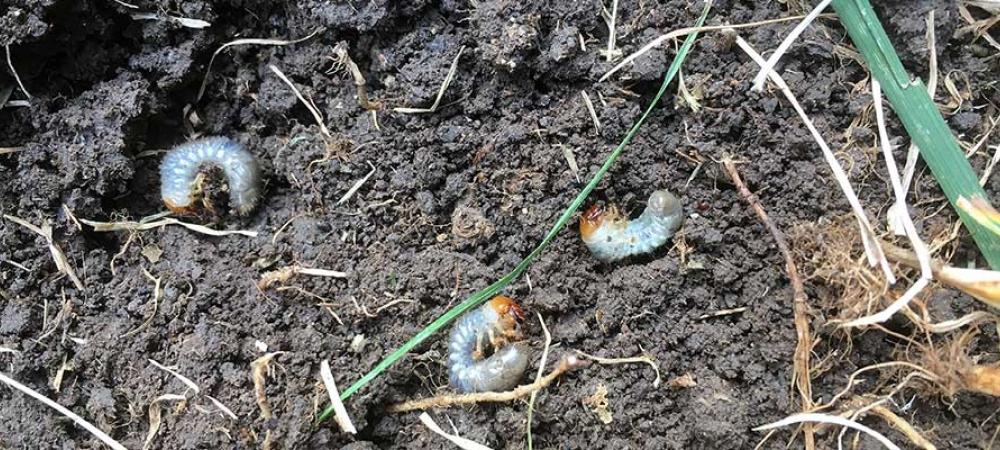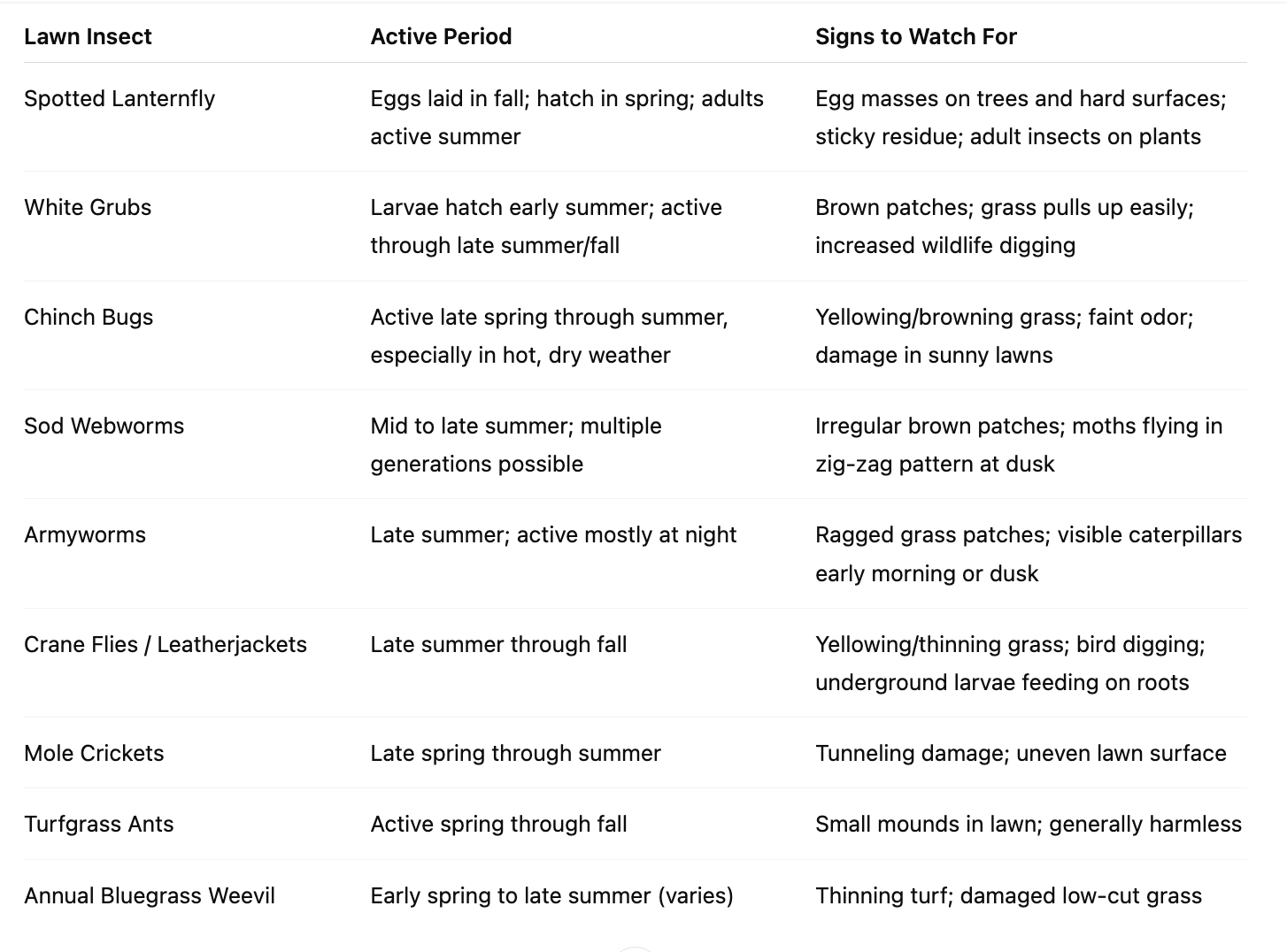Common Lawn Insects in Pennsylvania: Identification, Risks & What to Watch For

Pennsylvania’s lush lawns are part of what makes the Keystone State so beautiful — but they’re also a favorite feeding ground for a variety of lawn insects. From invasive threats like the spotted lanternfly to familiar foes like white grubs and chinch bugs, knowing what pests might be lurking beneath the grass can help homeowners stay one step ahead.
In this guide, we’ll introduce you to the most common lawn insects in Pennsylvania, what signs to look for, and why they matter for the health of your turf.
Spotted Lanternfly: Pennsylvania’s Invasive Menace
First making waves in Pennsylvania several years ago, the spotted lanternfly remains a serious concern, especially in areas like Philadelphia and surrounding counties. This invasive insect feeds on the sap of trees and plants, including many lawn and garden favorites.
Adult lanternflies are about an inch long, with striking gray wings covered in black spots and bright red hind wings. They start hatching as nymphs in spring and become adults by summer. One of the telltale signs of their presence is sticky “honeydew” residue that encourages black sooty mold growth, which can damage plants and grass alike.
Besides the damage to ornamental plants and trees, the lanternfly’s impact on local ecosystems and agriculture makes it a pest to watch for year-round.
White Grubs: The Root Feeders
White grubs are the larvae of various beetles such as Japanese beetles, masked chafers, and scarab beetles. These C-shaped larvae live just beneath the soil, chewing on the roots of grass and other plants. When grub populations rise, lawns can quickly develop brown, spongy patches that easily pull up from the soil.
Homeowners often notice increased wildlife digging as birds and raccoons hunt for these juicy larvae. White grub activity typically peaks in summer, and signs often appear as the grass weakens and browns.
Chinch Bugs: Small but Mighty Sap Suckers
Chinch bugs are tiny insects that can cause big trouble. These pests pierce grass blades and suck out the sap, causing yellowing and then browning in affected areas. A faint, unpleasant odor sometimes accompanies chinch bug infestations.
They tend to thrive in hot, dry conditions and often overwinter in thatch or debris. Chinch bugs can be especially problematic in sunny lawns with thin or stressed grass.
Sod Webworms: The Lawn Moths’ Larvae
Sod webworms are the caterpillar larvae of small moths that feed on grass blades mostly at night. Damage appears as irregular brown patches, and if you watch closely at dusk, you might see moths darting in a zig-zag pattern just above the turf.
These pests usually appear in midsummer and can cause noticeable damage during their multiple generations each season.
Armyworms: The Marching Caterpillars
Armyworms earned their name because of their habit of moving en masse across lawns and fields, consuming grass as they go. Mostly active at night, their ragged feeding creates patches of severely damaged turf.
You might spot the caterpillars early in the morning or late evening before they retreat underground for the day.
Crane Flies and Leatherjackets
Adult crane flies—often mistaken for giant mosquitoes or “daddy longlegs”—don’t bite or harm lawns. However, their larvae, known as leatherjackets, live in the soil feeding on grass roots. Heavy leatherjacket infestations cause yellowing, thinning grass, and can prompt birds and other animals to dig up the lawn in search of these soft-bodied larvae.
Other Pests to Keep an Eye On
- Mole Crickets: These tunneling insects disrupt roots and soil structure.
- Turfgrass Ants: While often harmless and even beneficial predators, large mounds can be a nuisance.
- Annual Bluegrass Weevil: A particular concern in finely-mowed turf like golf courses, this pest can cause significant damage if unnoticed.
Seasonal Timing and Lawn Care Awareness
Different lawn insects appear and cause damage during specific times of the year. Understanding their activity periods can help you monitor your lawn more effectively.

Contact Lawn Sense
Understanding which lawn insects are common in Pennsylvania—and what to look for—can help homeowners identify problems before they escalate. Keeping an eye on your grass, watching for changes in color and texture, and recognizing insect activity are the first steps toward maintaining a healthy lawn.
If you notice unusual patches, excessive wildlife digging, or signs of sap-sucking insects, it's time to consult Lawn Sense for further evaluation. Contact our team of lawn care experts today!